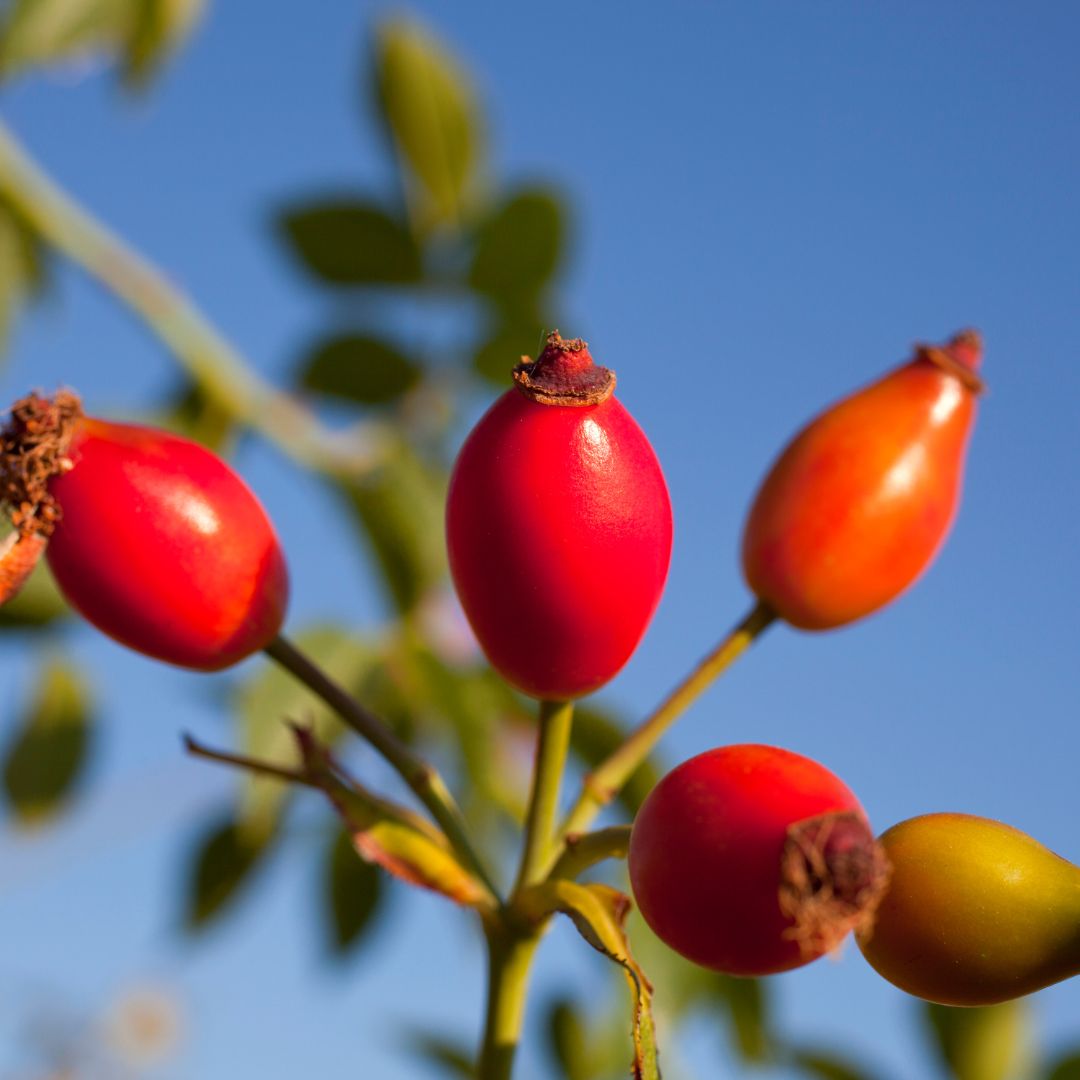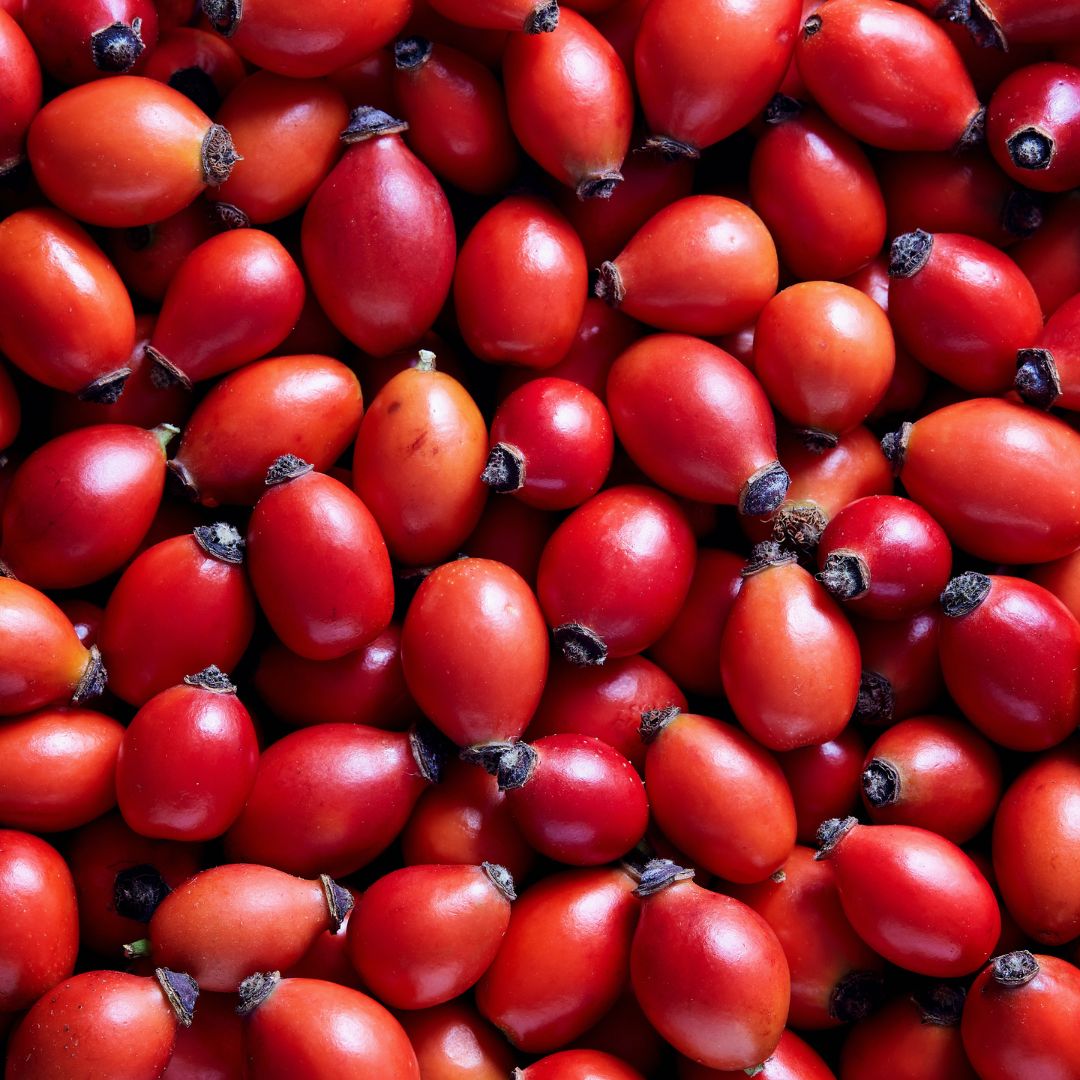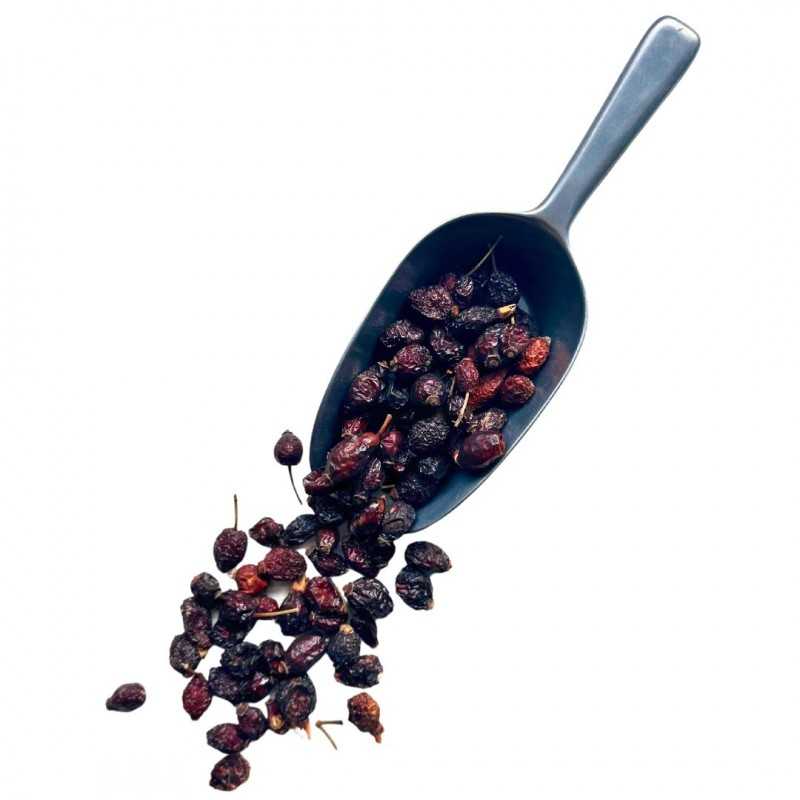
Rosehip: botany, properties and uses of this berry
Rosehip, the essentials in 3 points:
-Rich in antioxidants such as vitamin C
-Also contains a good dose of flavonoids, organic acids and nutrients, including calcium, potassium, magnesium, pectins, tannins and carotenoids.
-Supports the immune system and contributes to the proper functioning of the digestive system
To promote the body’s well-being, phytotherapy can call on different parts of plants. Active ingredients can be found in leaves, flowers and plant roots. Fruits such as rosehips are also ideal ingredients.

What are rosehips?
This name refers to the fruit of the wild rose, also known as the rose hip. It’s a small, more or less elongated berry, orange-red depending on its maturity. Very fleshy, the rosehip contains small seeds and fine, irritating hairs. Children generally use these hairs to make scratching hairs.
Rosehips are edible. It has a delicate, slightly sweet and tart taste. These false fruits are harvested in autumn, when they turn a lovely orange color. They can also be picked in winter, just after the first frosts. Rosehips are covered in hair, so gloves and suitable clothing are recommended during harvesting.
How to recognize wild roses
Rosehips are thorny sub-shrubs of the Rosaceae family. Growing up to 3 meters high, it is the most common rose species in France. The wild rose has deciduous, semi-evergreen foliage. Its branches are entirely covered with needles. It’s from this characteristic that this sub-shrub derives its name of wild rose. The wild rose blooms between spring and summer. The sub-shrub is then dressed in white or pink flowers with 5 petals and numerous stamens. The flowers may grow in groups or alone. Rosehips are undemanding shrubs. In the wild, it is most often found at the edge of woodland or in hedges and undergrowth. In the garden, rosehips should be grown in rich, dry to cool soil. It can grow in both sunny and lightly shaded areas. This hardy shrub can withstand temperatures as low as -20°C. For best results, plant in spring or autumn. To boost the wild rose’s flowering, it may be worth adding a little organic fertilizer to the soil throughout the spring. A good mulch also keeps the soil cool and prevents weeds from growing. For a harmonious appearance, it’s always advisable to cut off spent flowers and prune rosehips once a year. Pruning involves removing dead wood and excess suckers.
How should rosehip be eaten to enjoy its benefits?
Like acerola, rosehip is naturally rich in antioxidants, including vitamin C and polyphenols. This false fruit also contains a healthy dose of flavonoids, organic acids and nutrients, including calcium, potassium, magnesium, pectins, tannins and carotenoids. These compounds are present in varying amounts in rosehips. The quantity depends on criteria such as the harvesting period and growing location. Whatever the case, rosehip remains a concentrate of active ingredients. These act synergistically to support the immune system and contribute to the proper functioning of the digestive system. These same active ingredients also help to regulate blood pressure and considerably improve skin health. In today’s phytotherapy, rosehip is available in a variety of formats: capsules, tablets and even mother tinctures. Some growers also offer powdered extracts of these berries. These are rigorously selected and then dried before being pressed. Depending on your taste, rosehip powder can easily be added to a glass of lemon water, fruit juice, yoghurt or compote. Lovers of hot drinks can also indulge in a good herbal tea or rosehip infusion. To balance the flavor, we recommend adding a teaspoon of honey to the drink. Rosehip can also be eaten fresh, dried, in jam or as a sauce on pasta or pizza. Whichever format you choose, it’s always advisable to consume the product in moderation. On a daily basis, we encourage you to adopt a healthy lifestyle and healthy eating habits. In addition, always scrupulously respect the dosage of dietary supplements when taking them.






